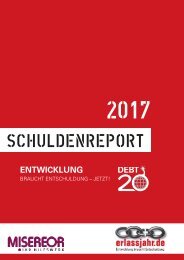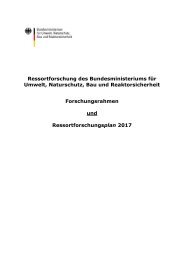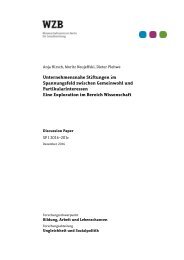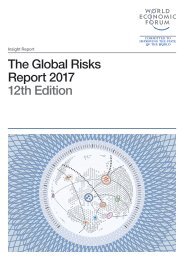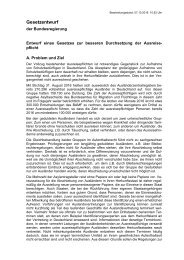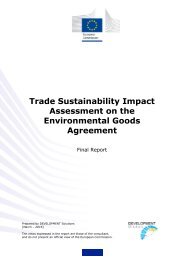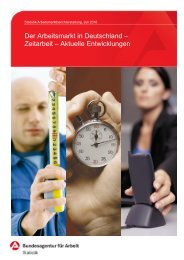Human Development Report 2016
6Tyccfrzw
6Tyccfrzw
You also want an ePaper? Increase the reach of your titles
YUMPU automatically turns print PDFs into web optimized ePapers that Google loves.
detecting illicit flows. This is feasible if existing<br />
registries from main markets are centralized<br />
and expanded to include derivatives. 67<br />
On-demand information (for example, one<br />
government requesting information about<br />
some taxpayer) is not effective, since it has to<br />
go through an investigation with limited information<br />
(precisely why information is being<br />
requested). But an active global mechanism is<br />
feasible. In 2010 the US Congress passed the<br />
Foreign Account Tax Compliance Act, which<br />
requires financial institutions in the world to<br />
inform US tax authorities of assets held by US<br />
citizens. 68<br />
Integrated information systems can reduce<br />
illicit financial flows, enabling authorities at<br />
both ends of the flows to act against them.<br />
For instance, the destination of illicit flows<br />
from Africa is concentrated in its main trading<br />
partners (Canada, China, Europe, India, Japan,<br />
the Republic of Korea and the United States). 69<br />
Given the institutional weakness of most<br />
African countries, their trading partners could<br />
boost transparency.<br />
Increase technical capacity of countries<br />
to process information and implement<br />
active policies against tax evasion, tax<br />
avoidance and illicit flows<br />
To make the globalization of information<br />
work in favour of public policies, governments<br />
require preparation. Even if information about<br />
foreign assets becomes readily available as the<br />
result of a data revolution, its effectiveness will<br />
depend on adequate and systematic analysis.<br />
So international cooperation should support<br />
the development of technical capacity in this<br />
area.<br />
Making the global economy sustainable<br />
The Paris Agreement on climate change is a<br />
milestone but will not be enough in itself.<br />
Experts agree that countries’ current pledges<br />
to reduce greenhouse gas emissions (intended<br />
nationally determined contributions) will not<br />
keep global warming below the critical level of<br />
1.5°–2°C above preindustrial levels. 70 In fact,<br />
if all countries were to keep to their pledges,<br />
the global mean temperature would rise 2.4°–<br />
2.7°C by 2100. 71<br />
Yet curbing global warming is possible.<br />
Coordinated global action has worked well in<br />
the past, as in moves to halt ozone depletion<br />
in the 1990s. The 1987 Montreal Protocol<br />
on Substances That Deplete the Ozone Layer<br />
and subsequent compliance by signatory states<br />
led to a sharp decline in atmospheric chlorine,<br />
which depletes the ozone layer. 72 Then, however,<br />
both the problem and the solution appeared<br />
much more straightforward. Now the world<br />
has a clear diagnosis of the problem associated<br />
with greenhouse gases, but the solution is not as<br />
clear and even less incentive-compatible. Still,<br />
things may be changing: A proposed plan to<br />
raise global investment in energy efficiency and<br />
to expand renewable energy from the current<br />
0.4 percent of GDP a year to 1.5–2 percent<br />
of GDP a year would reduce carbon dioxide<br />
emissions 40 percent over 20 years, to levels<br />
consistent with a limited increase in temperatures,<br />
and have positive net macroeconomic<br />
effects. 73 With enough political commitment,<br />
these targets are feasible.<br />
Technological development has already<br />
allowed the decoupling of economic growth<br />
and carbon dioxide emissions in 21 countries,<br />
including Germany, Spain, Sweden, the United<br />
Kingdom and the United States. 74 World<br />
economic growth in 2014 and 2015 was not<br />
accompanied by emissions growth. 75 So there<br />
is space for a good equilibrium. If countries<br />
have access to those technologies through new<br />
investments, a decisive investment plan can<br />
overcome the feared tradeoff between faster<br />
economic development and lower greenhouse<br />
gas emissions.<br />
Environmentally sustainable policies are not<br />
only the right thing to do for future generations,<br />
they are also an effective way of promoting<br />
human development now. An aggressive investment<br />
plan is likely to have a positive effect<br />
on job creation, based on estimates in Brazil,<br />
China, Germany, India, Indonesia, the Republic<br />
of Korea, South Africa, Spain and the United<br />
States. In India increasing clean energy investments<br />
by 1.5 percent of GDP a year for 20 years<br />
will generate a net increase of about 10 million<br />
jobs annually, after factoring in job losses from<br />
retrenchments in the fossil fuel industries. 76<br />
Continuing advocacy and communication<br />
on the need to address climate change and<br />
protect the environment are essential to gather<br />
Technological<br />
development has<br />
already allowed<br />
the decoupling of<br />
economic growth<br />
and carbon dioxide<br />
emissions in 21<br />
countries<br />
Chapter 5 Transforming global institutions | 151



